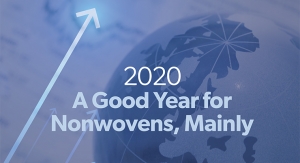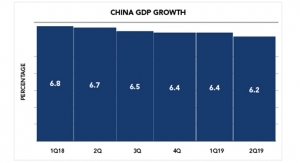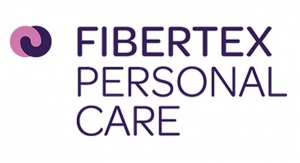Karen McIntyre, editor12.02.14
This month’s news sections read like a mergers and acquisitions roundup as several companies many items report on companies changing hands in recent weeks. We report that J.H. Ziegler and Vita Nonwovens, both nonwovens manufacturers serving industrial markets, have been acquired by private equity investors; that Hollingsworth & Vose has acquired India-based Ramen FibreScience; Fibertex Nonwovens bought U.S.-based Nonwoven Solutions and Fibertex Personal Care purchased a full stake in the printing company it helped found, Innowo Print.
This string of investment activity caps off a year-and-a-half that has been ripe with mergers and acquisitions—including PGI’s headline-making purchase of Companhia Providencia and Fiberweb, Lydall’s purchase of Andrew Industries and Georgia-Pacific’s acquisition of Buckeye Technologies.
Companies list several reasons for these acquisitions—entry to new geographies, access to new technologies, the ability to capitalize on certain synergies for growth, consolidating to remove excess capacity from the industry—but really all of these deals achieve the same thing. They give the acquiring company a short cut to success, creating a more efficient means of growth, if done correctly.
For Fibertex Nonwovens, the acquisition of Nonwoven Solutions provides instant access to the North American market, a region where this Danish company has not had a strong presence historically. In the past, Fibertex Nonwovens has used the same strategy, with success, to gain access to Eastern Europe, when it purchased Vigona, and France, through the acquisition of Tharreau Industries.
Meanwhile, the new ownership of Ziegler and Vita Nonwovens gives these companies better financial footing and provides their investors with a means to capitalize on the strength of the industrial nonwovens market.
Fibertex Personal Care’s purchase of Innowo Print allows the printing company to continue on when other investors wanted to bow out. According to Fibertex, Innowo offers it a value proposition in nonwovens that it cannot do without. Fibertex’s investment in Innowo will not only allow it to offer printed nonwovens, it will also strengthen Innowo and its ability to offer services throughout the industry.
Lydall used acquisition to gain access to an entirely new market—industrial baghouse. Taking Andrew in not only added $120 million in sales to its revenues, but also provided it with operations in the U.S., China and the U.K.
Larger acquisitions like the PGI deals and the merger of Georgia-Pacific and Buckeye, can create powerful industry powerhouses. By adding something like $700,000 in revenues through acquisition, PGI could potentially be the world’s largest nonwovens manufacturer this year, and that’s not all. The acquisitions give the company access to new geographies (Brazil) and markets (industrial, geosynthetics) in an instant. Meanwhile, G-P propelled itself to the top of the airlaid market by acquiring Buckeye Technologies and gave itself access to new assets and broader geographies.
Whether or not consolidation is a good idea varies because each acquisition comes with its own set of challenges. When two companies integrate too quickly, what made the acquired company so appealing can be wrecked; but if you don’t move too fast, the synergies of the two companies can be damaged as well.
Karen McIntyre
editor
kmcintyre@rodmanmedia.com
This string of investment activity caps off a year-and-a-half that has been ripe with mergers and acquisitions—including PGI’s headline-making purchase of Companhia Providencia and Fiberweb, Lydall’s purchase of Andrew Industries and Georgia-Pacific’s acquisition of Buckeye Technologies.
Companies list several reasons for these acquisitions—entry to new geographies, access to new technologies, the ability to capitalize on certain synergies for growth, consolidating to remove excess capacity from the industry—but really all of these deals achieve the same thing. They give the acquiring company a short cut to success, creating a more efficient means of growth, if done correctly.
For Fibertex Nonwovens, the acquisition of Nonwoven Solutions provides instant access to the North American market, a region where this Danish company has not had a strong presence historically. In the past, Fibertex Nonwovens has used the same strategy, with success, to gain access to Eastern Europe, when it purchased Vigona, and France, through the acquisition of Tharreau Industries.
Meanwhile, the new ownership of Ziegler and Vita Nonwovens gives these companies better financial footing and provides their investors with a means to capitalize on the strength of the industrial nonwovens market.
Fibertex Personal Care’s purchase of Innowo Print allows the printing company to continue on when other investors wanted to bow out. According to Fibertex, Innowo offers it a value proposition in nonwovens that it cannot do without. Fibertex’s investment in Innowo will not only allow it to offer printed nonwovens, it will also strengthen Innowo and its ability to offer services throughout the industry.
Lydall used acquisition to gain access to an entirely new market—industrial baghouse. Taking Andrew in not only added $120 million in sales to its revenues, but also provided it with operations in the U.S., China and the U.K.
Larger acquisitions like the PGI deals and the merger of Georgia-Pacific and Buckeye, can create powerful industry powerhouses. By adding something like $700,000 in revenues through acquisition, PGI could potentially be the world’s largest nonwovens manufacturer this year, and that’s not all. The acquisitions give the company access to new geographies (Brazil) and markets (industrial, geosynthetics) in an instant. Meanwhile, G-P propelled itself to the top of the airlaid market by acquiring Buckeye Technologies and gave itself access to new assets and broader geographies.
Whether or not consolidation is a good idea varies because each acquisition comes with its own set of challenges. When two companies integrate too quickly, what made the acquired company so appealing can be wrecked; but if you don’t move too fast, the synergies of the two companies can be damaged as well.
Karen McIntyre
editor
kmcintyre@rodmanmedia.com









